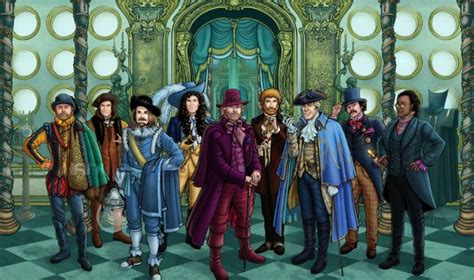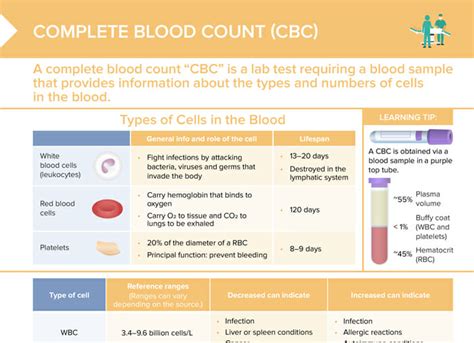The concept of regeneration in the British sci-fi series “Doctor Who” has allowed the show to maintain its freshness and excitement over the decades, as the lead character, known as “the Doctor,” can regenerate into a new body when nearing death. This unique element has introduced numerous actors to the iconic role, each bringing their own interpretation and style to the character. From the classic series to the modern era, the various incarnations of the Doctor have captivated audiences worldwide with their bravery, wit, and compassion.
The First Doctor: William Hartnell (1963-1966)
The First Doctor, played by William Hartnell, set the stage for the beloved character. His grouchy yet lovable demeanor, combined with his intelligence and cunning, made for an intriguing introduction to the Time Lord from Gallifrey. Notable companions during his tenure included Susan (his granddaughter), Barbara Wright, and Ian Chesterton, who together formed a formidable team as they navigated through time and space. The First Doctor’s era is remembered for its historical stories, such as “Marco Polo” and “The Aztecs,” as well as its introduction to the Daleks in “The Daleks,” a species that would become the Doctor’s arch-nemesis.
The Second Doctor: Patrick Troughton (1966-1969)
Patrick Troughton’s portrayal of the Second Doctor marked a significant shift towards a more whimsical and cosmic character. His “cosmic hobo” style, complete with a bow tie and a recorder, became iconic. This era saw the introduction of the Cybermen, another enduring villain of the series, in the episode “The Tenth Planet.” The Second Doctor’s stories often blended science fiction concepts with historical contexts, as seen in “The Highlanders,” and emphasized the importance of teamwork and friendship between the Doctor and his companions, including Jamie McCrimmon and Zoe Heriot.
The Third Doctor: Jon Pertwee (1970-1974)
Jon Pertwee’s Third Doctor introduced a dapper, action-oriented version of the character, often finding himself earthbound due to the Time Lords’ banishment. This era was notable for its focus on science fiction concepts, such as in “Spearhead from Space,” and for introducing iconic villains like the Master, a renegade Time Lord. The Third Doctor’s companions, including Jo Grant and Sarah-Jane Smith, played crucial roles in his adventures. The UNIT (United Nations Intelligence Taskforce) team, led by Brigadier Alistair Gordon Lethbridge-Stewart, also became integral to this era, fighting against alien threats on Earth.
The Fourth Doctor: Tom Baker (1974-1981)
Tom Baker’s Fourth Doctor is often regarded as one of the most beloved incarnations. His eccentric, bohemian style, marked by a long scarf and a wide-brimmed hat, along with his sharp wit and deep empathy, captivated audiences. This era saw a wide range of stories, from the gothic horror of “The Brain of Morbius” to the humorous “City of Death.” Companions like Sarah-Jane Smith, Leela, and Romana (a Time Lady) were instrumental in his adventures, and the introduction of K-9, a robotic dog, added a new dynamic to the TARDIS crew.
The Fifth Doctor: Peter Davison (1982-1984)
The Fifth Doctor, played by Peter Davison, brought a more vulnerable and humanized side to the character. His tenure included companions like Tegan Jovanka, Nyssa, and Adric, and introduced the Cybermen’s attempt to prevent their own creation in “Earthshock.” The Fifth Doctor’s stories often explored complex themes, such as redemption and sacrifice, as seen in “The Visitation” and “Mawdryn Undead.” His regeneration into the Sixth Doctor marked a significant shift, both in the character’s personality and in the tone of the series.
The Sixth Doctor: Colin Baker (1984-1986)
Colin Baker’s Sixth Doctor was known for his flamboyant and sometimes volatile personality, as well as his brightly colored costume. Despite the challenges faced during his tenure, including a hiatus in production, the Sixth Doctor had notable adventures with companions like Peri Brown and Melanie Bush. The trial of the Doctor, as depicted in “The Trial of a Time Lord,” showcased the complexities of Time Lord politics and the Doctor’s defense of his actions against accusations of meddling in the universe.
The Seventh Doctor: Sylvester McCoy (1987-1989)
Sylvester McCoy’s Seventh Doctor marked a return to a more subtle and manipulative character, often playing a longer game than his companions could understand. His era saw the introduction of Ace, a young woman from the 20th century who became a loyal companion, and the reimagination of classic villains like the Daleks and the Cybermen. Stories like “Remembrance of the Daleks” and “The Curse of Fenric” showcased the Doctor’s cunning and his ability to navigate complex, politically charged situations.
The Eighth Doctor: Paul McGann (1996)
Paul McGann’s Eighth Doctor, featured in the 1996 television film, brought a romantic and adventurous spirit to the role. Although his on-screen time was limited, this Doctor’s story, which included his companions Grace Holloway and Chang Lee, explored themes of identity, redemption, and the consequences of the Doctor’s actions. The film’s climax, which involved the Doctor’s confrontation with the Master, set the stage for the revamped series that would follow years later.
The Ninth Doctor: Christopher Eccleston (2005)
The revamped series, launched in 2005, introduced Christopher Eccleston as the Ninth Doctor, a war-torn version of the character haunted by the consequences of the Time War. His adventures with Rose Tyler, a shopgirl from London, redefined the series for a new generation. Episodes like “The Empty Child” and “Dalek” demonstrated the Ninth Doctor’s capacity for both humor and deep emotional connection, as well as his unwavering commitment to protecting humanity from threats both alien and human.
The Tenth Doctor: David Tennant (2005-2010)
David Tennant’s Tenth Doctor built upon the success of the revamped series, bringing a charismatic and intellectually charged energy to the character. His companions, including Rose Tyler, Martha Jones, and Donna Noble, each had significant story arcs that explored the human condition, love, and sacrifice. Notable episodes like “Blink” and “The Girl in the Fireplace” showcased the Doctor’s ability to navigate through time, saving people from dangerous situations, and his deep sense of loneliness and loss.
The Eleventh Doctor: Matt Smith (2010-2013)
Matt Smith’s Eleventh Doctor was the youngest actor to play the role, bringing a manic energy and childish wonder to the character. His era included companions like Amy Pond, Rory Williams, and Clara Oswald, and featured complex, timey-wimey storylines in episodes such as “The Pandorica Opens” and “The Doctor’s Wife.” The Eleventh Doctor’s adventures often delved into the mysteries of time itself, exploring the consequences of the Doctor’s actions and the nature of his existence.
The Twelfth Doctor: Peter Capaldi (2014-2017)
Peter Capaldi’s Twelfth Doctor marked a return to a darker, more serious tone, with a character who was both fiercely intelligent and sometimes uncomfortably honest. His companions, including Clara Oswald and Bill Potts, navigated complex themes of identity, power, and the responsibility that comes with knowledge. Episodes like “Mummy on the Orient Express” and “Heaven Sent” showcased the Twelfth Doctor’s depth, exploring his inner turmoil and his capacity for both compassion and ruthlessness when necessary.
The Thirteenth Doctor: Jodie Whittaker (2018-Present)
Jodie Whittaker’s Thirteenth Doctor made history as the first female incarnation of the character, bringing a fresh, energetic vibe to the role. Her adventures with Ryan Sinclair, Yasmin Khan, and Graham O’Brien have introduced a new generation to the wonders and dangers of the universe. Episodes such as “Rosa” and “Demons of the Punjab” have highlighted the Doctor’s commitment to justice and her ability to connect with people across different times and cultures, emphasizing the power of friendship and unity in the face of adversity.
Each incarnation of the Doctor has contributed uniquely to the rich tapestry of “Doctor Who,” reflecting the times in which they were produced while maintaining the timeless spirit of adventure, curiosity, and compassion that defines the character. As the series continues to evolve, the legacy of its past lives remains an integral part of its identity, a testament to the enduring appeal of a Time Lord who travels through time and space, saving civilizations and righting wrongs, always with a sense of wonder and a heart full of hope.
What is the concept of regeneration in Doctor Who?
+Regeneration is a biological process that allows the Doctor, a Time Lord, to cheat death by regenerating into a new body when the current one is close to death or is mortally wounded. This process not only heals the body but also changes the Doctor’s physical appearance and personality to some extent.
How many incarnations of the Doctor have there been in the show’s history?
+As of the latest series, there have been thirteen incarnations of the Doctor, starting from William Hartnell’s First Doctor to Jodie Whittaker’s Thirteenth Doctor. The show has also introduced a War Doctor, played by John Hurt, whose incarnation occurred during the Time War and was not originally counted in the sequence but is now considered part of the Doctor’s regenerations.
What makes each Doctor unique?
+Each Doctor brings a unique personality, style, and approach to the role. They are influenced by the actors who play them, the companions they travel with, and the time period in which their stories are set. From the First Doctor’s cantankerous nature to the Thirteenth Doctor’s energetic optimism, each incarnation contributes to the rich diversity of the character.
How has the concept of the Doctor evolved over time?
+The concept of the Doctor has evolved significantly, reflecting changes in society, television production, and audience preferences. From a paternal figure in the early years to a more complex, emotionally vulnerable character in the modern era, the Doctor has adapted to remain relevant and captivating. The introduction of new villains, companions, and storylines has also contributed to the character’s evolution.
What is the significance of the Doctor’s companions in the series?
+The Doctor’s companions serve as audience surrogates, allowing viewers to experience the adventures and emotions of the show through their eyes. They bring human perspective and vulnerability to the stories, often challenging the Doctor’s decisions and providing emotional depth to the narrative. Companions like Rose Tyler, Donna Noble, and Amy Pond have had profound impacts on the Doctor, influencing his actions and decisions.



